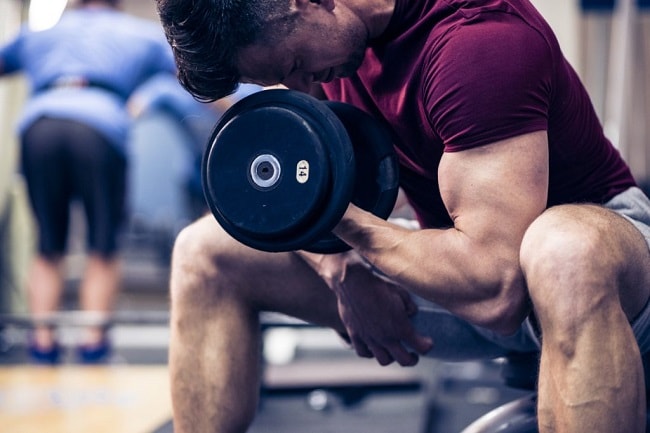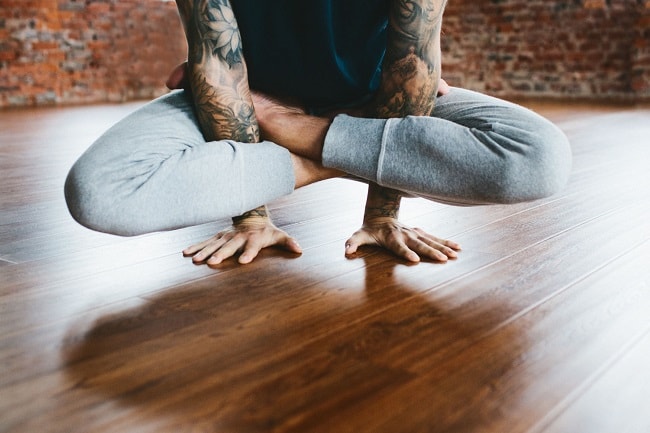1
HOME > Health & Fitness >
WORKOUT FAUX PAS YOU NEED TO STOP RIGHT NOW
THE CORRECT WAY TO EXERCISE AT THE GYM
Written by Orla Lavery in Health & Fitness on the 1st September 2017

Often people begin isolation exercises in the early-mid stages of their fitness programme and they are resorted to when you feel as though progress isn’t being made fast enough in one specific muscle. It seems like a logical conclusion to reach. You feel as though your triceps aren’t making gains as fast as you’d like, so you’re going to isolate them and work them harder. So you incorporate a simple dumbbell tricep extension into your routine.
Why this is a problem: There are two problems with doing this. First, by working only one muscle you’re going to struggle to build weight in your lifts so the progress you see will be marginal and slow. Secondly, if you continue long enough, the strength in the muscle you choose to isolate will not be equally compensated by the surrounding muscles which is likely to lead to injury as you ramp up the weight in other exercises.
How to fix it: The body is made up of complex and dynamic networks of muscle fibres and the best way to lose body fat and build muscle mass quickly is to engage as many of these fibres simultaneously. This is why compound exercises are nearly always a better alternative. The acclaimed squat, deadlift, overhead press, or basic barbell bench press, will engage several muscle fibres yielding more strength in your lifts and greater stability to prevent injury. Take the standard bench press; this will work your biceps, triceps, deltoids, and chest muscles while also building muscle to prevent injury.

Not stretching properly is probably the worst fitness faux pas and it’s usually a result of poor time management and lack of planning. When you lead a busy life it can be difficult to find the time to go to the gym, let alone to allocate time for stretching in the gym. However, avoiding strecthing will only hamper your progress in the gym.
Why this is a problem: Although it can be tempting to try and make every second count in the gym if you only have limited time, not stretching will indefinitely result in an injury, which can stop you from going to the gym altogether. Stretching doesn’t have to be boring.
How to fix it: Start your exercise with a five minute warm up, try skipping, running, rowing, or cycling, just make sure it isn’t overly strenuous. Then, take at least 5 minutes to stretch, start from the top of your body and work your way down from head to toe. It’s not only good to prevent injury and build flexibility; it is also great for your mind. It allows you to get a sense of what’s going on in your body, where you’re holding tension and lets you know before you’ve started working out which areas might be prone to injury. Then, after your workout, take at least two minutes to do some gentle cardio, walk, jog, or cycle slowly. The last three minutes should be used to stretch your muscles, especially the ones you’ve been working, and you should notice increased flexibility after your workout, as muscles are warmer and suppler. This is also a great way to track progress and end your workout on a high note.

It can be easy to forgo form when increasing weight as it seems a straightforward way to make better progress. Often when you’re not ‘feeling the burn’ or your quadriceps aren’t what they used to be it can seem like ramping up the weight is what your body needs. This is not the case, with the right diet, the body will take up to three weeks to build the necessary muscle to progress onto higher weights and doing this prematurely will inevitably make your form worse.
Why this is a problem: It’s really important to maintain good form, not only to prevent injury, but also to ensure you’re doing the exercise properly to see results. Increasing the weight may allow you to feel more in your muscles but forgoing good form to achieve this means you’re no longer doing the exercise properly.
How to fix it: This is pretty simple. First, make sure you’re doing exercises properly, go online and look up ‘good form for (chosen exercise)’. Then, try this out at the gym, if it feels unnatural or becomes difficult to complete the exercise then drop the weight back. Although this may seem frustrating you will quickly notice a difference in muscle mass, despite the lower weight, because if you weren’t doing the exercise properly in the first place you were probably not engaging all the muscle fibres necessary for the exercise.


Orla Lavery
Orla is a London-based fashion, arts and culture journalist, with a personal and professional habit in menswear. Having worked in the industry for over 10 years, she now specialises in the fashion business space, consulting to a number of brands on their business strategy and optimising for sustainable, long-term growth.


Trending
2
3
4
5
6
7
8
9
10








